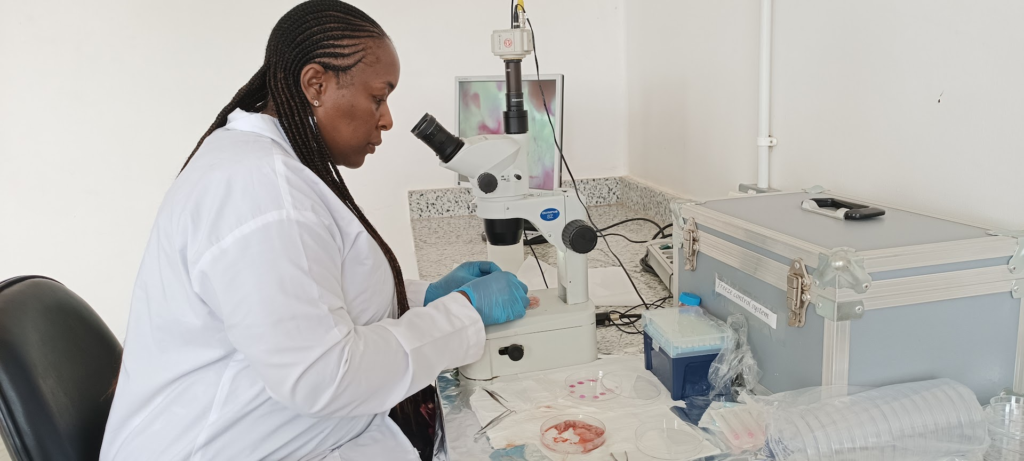By Murimi Gitari
The locally adapted chicken breed is also key to the rural economy, with smallholder poultry farmers earning income from selling eggs and live chicken for meat.
Scientists are, however, warning about growing threats to its future and availability in household diets from, among others, diseases, breeding, and natural disasters. Diseases like Newcastle disease and avian influenza could wipe out a large proportion of the flock in the near future even as it suffers widespread genetic erosion from the introduction of commercial breeds said to be more productive, but less adapted to local environment and production systems.
Inbreeding and breeding cessation, natural and man-made disasters and the clutch reproduction mode and extensive production system of in situ populations are increasingly making the indigenous chicken flock costly to manage, hence less attractive to farmers. Due to a lack of knowledge, farmers tend to pluck the best animals from the flock for donation, reception of honorable guests, market, traditional ceremonies among other purposes, contributing to the negative selection. Dr Christian Tiambo, a scientist at the International Livestock Research Institute (ILRI), says more attention should be paid to conserving the genetic resources of the indigenous chicken to save it from extinction.
“It is important to create awareness and good communication of the significant importance of local and locally adapted genetic resources for food and nutrition security and poverty alleviation for the more than 85 percent of Africa rural dwellers who keep local chicken, and advocate for more scientific attention to these valuable genetic resources,”
says Dr Tiambo, who is based at ILRI’s Centre for Tropical Livestock Genetics and Health (CTLGH).
Dr Tiambo is leading a team of scientists working on a project that aims to conserve African and Southeast Asian indigenous chicken breeds through biobanking technology, which involves collecting their genetic materials and storing them for future use.
Preserving indigenous poultry biodiversity for subsequent use will also enhance their resilience and productivity and support future breeding.
Under the Centre for Tropical Livestock Genetics and Health (CTLGH), in collaboration with the Tropical Poultry Genetic Solutions Strategy (TPGS) deployed by the ILRI scientists in collaboration with colleagues from the Roslin Institute of the University of Edinburgh and from the Kenya Agricultural and Livestock Research Organization (KALRO), germ cells or reproductive cells are isolated and stored in liquid nitrogen where they can later be retrieved and re-injected into a recipient host at its earliest stage of embryonic development.
Dr Tiambo says it has been scientifically demonstrated that the offspring of the surrogate chicken are 100 percent local chicken, without exotic or any other foreign genetic material in it. “The surrogate chicken is not yet currently being used, although we got all approvals from the National Biosafety Authority of Kenya. The final logistical checks are being done,” he says.
The method was preferred to conservation of birds by freezing of oocytes or embryos, which has proven difficult because of the organic composition of the egg and its high fat content. “Freezing of semen have been proven possible, but with a lot of limitations: in birds, males are homogametic (ZZ) and females heterogametic (ZW), meaning conserving sperm automatically implies losing 50 percent of the genes pool carried by the W chromosome
Further, a large proportion of sperm cells don’t survive deep freezing, while trials to restore the breed using the remaining cryopreserved semen that may have survived yielded very low fertility rates after artificial insemination.
At the end, less that 12 percent of the gene pool could be restored using cryopreserved semen, and the challenges to be faced will be the same as in in vivo conservation,” says Dr Tiambo. The scientist is quick to note that the results achieved through this technology is not in any way GMO nor are the chicken breeds GMOs. “With the gene-edited non-transgenic surrogate host technology, we are not creating any hybrid.
No new breed of chicken or GMO animal is produced. Rather, the cells cryopreserved in liquid nitrogen remain entirely (100 percent) those of the indigenous chicken. No transformation is made on them, and the chicks produced from them are 100 percent identical to the donor indigenous chicken.
Further as explained earlier, the material is cryopreserved in the vapour of liquid nitrogen and is free from pathogens, and this alone constitute a major advance in the capacity of reproductive technology to deliver animal seeds which are totally certified free from pathogens. So this biobanking technology is there as the best bet ever to safeguard biodiversity of indigenous chicken,” he says.
“With the surrogate, we plan to return to local communities exactly the same chicken genetics that their forefathers have been custodians from generations to generations and which are locally adapted and preferred in their environment and socio-cultural values.” Further, as Dr Tiambo explains, the aseptic quality of the frozen material cuts the risk of disease transmission from roosters to hens across flocks.

